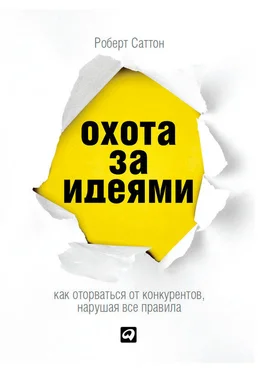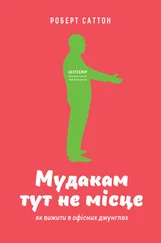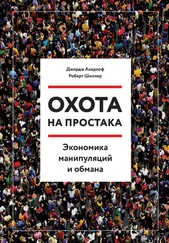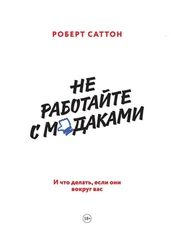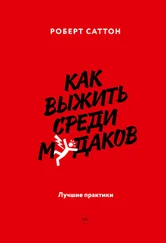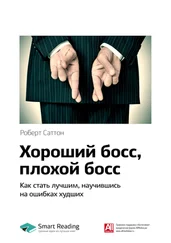Hiltzik, M., Dealers of Lightning (New York: HarperBusiness, 1999), 232.
Там же, с. 234.
Hiltzik, M., Dealers of Lightning (New York: HarperBusiness, 1999), 234.
Обзор литературы по теме надежности и обоснованности отборочных собеседований см. Arvey R. P., and J. E. Campion. The Employment Interview: A Summary and Review of Recent Research // Personal Psychology 35 ( 1982): 281–322; Eder R. W., and G. R. Ferris. The Employment Interview: Theory, Research, and Practice (Newbury Park, CA: Sage, 1989); Borman, W. C., M. A. Hanson and J. W. Hedge. Personnel Selection // Annual Review of Psychology 48 (1997): 299–337. В большинстве своем авторы обзоров литературы по данной теме приходят к заключению, что отборочные собеседования в той форме, в какой они обычно проводятся, не представляют большой ценности, не позволяют четко определить, хорошим или плохим работником будет интервьюируемый. И даже те немногие авторы, которые склонны считать типичное собеседование полезным инструментом отбора, признают, что он не особенно эффективен.
Svenson, O. Are We All Risky and More Skillful Than Our Fellow Drivers? // Acta Psychologia 47 (1981): 143–48.
Cringely R. X. Accidental Empires (New York: HarperBusiness, 1996), 11.
Charlton J. The Executive’s Quotation Book (New York: St. Martin’s Press, 1983): 74.
Anderson C. W. The Relation Between Speaking Times and Decision in the Employment Interview // Journal of Applied Psychology 44 (1960): 267–68.
См. Sternberg R. J., Wisdom: Its Nature, Origins, and Development (Cambridge, UK: Cambridge University Press, 1990); Meacham J. A. «The Loss of Wisdom» in Wisdom, 181–211; and Meacham J. A. «Wisdom and the Context of Knowledge: Knowing What One Doesn’t Know» in On the Development of Developmental Psychology, ed. D. Huhn and J. A. Meacham (Basel, Switzerland: Krager, 1983), 111–34.
Kotter J. P., and J. L. Heskett. Corporate Culture and Performance (New York: Free Press, 1992), 1.
Coyne W. «3M: Vision Is the Engine That Drives Our Enterprise» in Innovation: Breakthrough Thinking at 3M, DuPont, GE, Pfizer, and Rubbermaid, ed. R. M. Kanter, J. Kao and F. Wiersema (New York: HarperBusiness, 1997), 51.
См. Ash M. K. Mary Kay on People Management (New York, Warner Books, 1984); The Men’s Wearhouse: Success in a Declining Industry. Case #HR-5 (Palo Alto, CA: Graduate School of Business, Stanford University, 1997); O’Reilly III C. A., and J. Pfeffer, Hidden Value (Boston: Harvard Business School Press, 2000).
См. O’Reilly C. Corporations, Culture, and Commitment: Motivation and Social Control in Organizations // California Management Review 31 (1989): 24–38.
Chatman J. A. Matching People and Organizations: Selection and Socialization in Public Accounting Firms. Administrative Science Quarterly 36 (1991): 459–84.
New United Motors Manufacturing, Inc. (NUMMI), Case #HR-11 (Palo Alto, CA: Graduate School of Business, Stanford University, 1998).
New United Motors Manufacturing, Inc. (NUMMI), Case #HR-11 (Palo Alto, CA: Graduate School of Business, Stanford University, 1998).
Там же.
March J. G. Exploration and Exploitation in Organizational Learning. Organization Science 2 (1991): 71–87.
Bowen D. E., G. E. Ledford Jr., and B. R. Nathan. Hiring for the Organization, not the Job // Academy of Management Executive 5 (1991): 35–51.
Там же, с. 35.
Sitkin, S. Learning Through Failure: A Strategy of Small Loses // Research in Organizational Behavior , vol. 14, ed. B. M. Staw and L. L. Cummings (Greenwich, CT: JAI Press, 1992), 231–66.
Источники этих сведений: серия из 12 интервью, проведенных Стивеном Барли, Джеффри Мартином и Робертом Саттоном с сотрудниками фирмы в январе – феврале 1999 г.; архивные материалы, предоставленные нам сотрудниками корпорации; статья, опубликованная в отраслевом издании. Более полных сведений о данной корпорации предоставить не могу, поскольку интервью проводились нами при условии, что мы не будем раскрывать название корпорации.
Deutsch C. H. Software That Can Make a Grown Company Cry // The New York Times , November 8, 1998.
Pfeffer J., and G. R. Salancik. The External Control of Organizations: A Resource Dependence Perspective (New York: Harper & Row, 1978).
Kirkpatrick D. IBM: From Big Blue Dinosaur to E-Business Animal // Fortune , April 26, 1999.
Burrows P., and P. Elstrom. HP’s Carly Fiorina: The Boss // Business Week , August 2, 1999.
Интервью, данное Карли Фиорина в Чикаго 17 апреля 2000 г., www.hp.com/ghp/ceo/speeches/reinvent.html.
Стив Джобс, интервью, данное в DeAnza College’s Flint Center, Купертино, штат Калифорния, 6 мая 1998 г.
Blurb Buddies. Fast Company (December 1998): 54.
http://disney.go.com/DisneyWorld/DisneyInstitute/ProfessionalPrograms/Disney_Difference/index.html.
Pfeffer, J., and R. I. Sutton, The Knowing-Doing Gap: How Smart Companies Turn Knowledge into Action (Boston: Harvard Business School Press, 1999).
Cummings, A., and G. R. Oldham, “Enhancing Creativity: Managing Work Contexts for the High Potential Employee,” California Management Review 40 (1997): 22–38.
Kirton M. J. Adaptors and Innovators (London: Routledge, 1989); Kirton M. J. Adaptors and Innovators: A Description and Measure // Journal of Applied Psychology 61 (1976): 622–29; and Keller R. T. Predictors of the Performance of Project Groups in R&D Organizations // Academy of Management Journal 29 (1986): 715–26.
Sutton R. I., K. M. Eisenhardt, and J. V. Jucker. Managing Organizational Decline: Lessons from Atari // Organizational Dynamics 14 (1986): 17–29.
Интервью провели Памела Эпштейн и Роберт Саттон 1 августа 1984 г. в Стэнфордском универитете.
Читать дальше
Конец ознакомительного отрывка
Купить книгу
